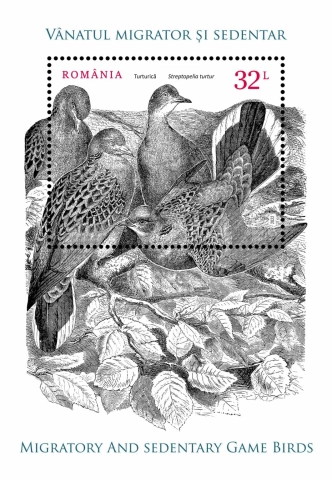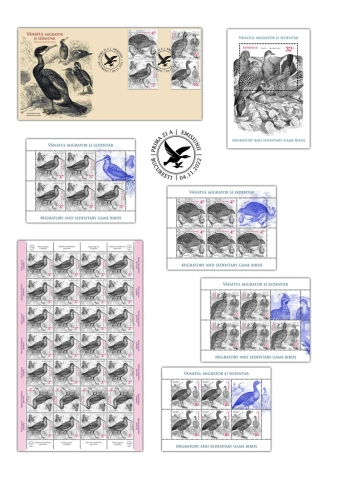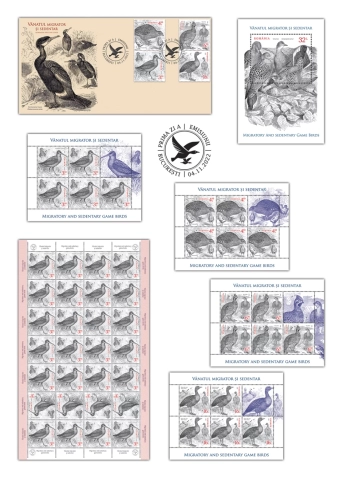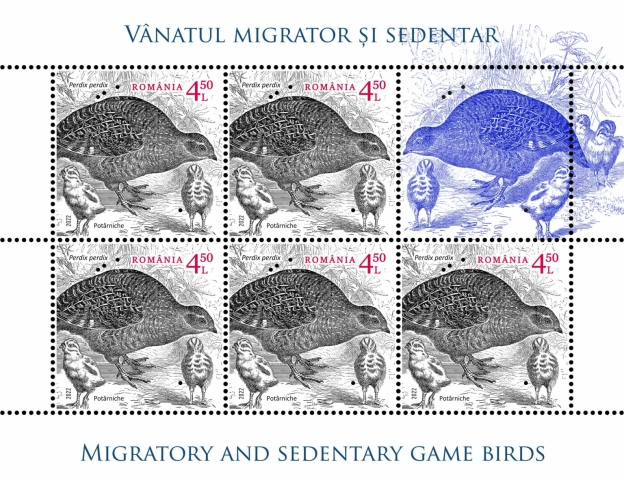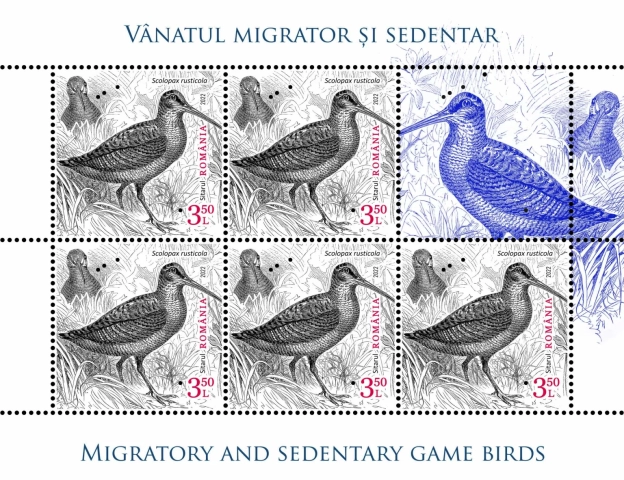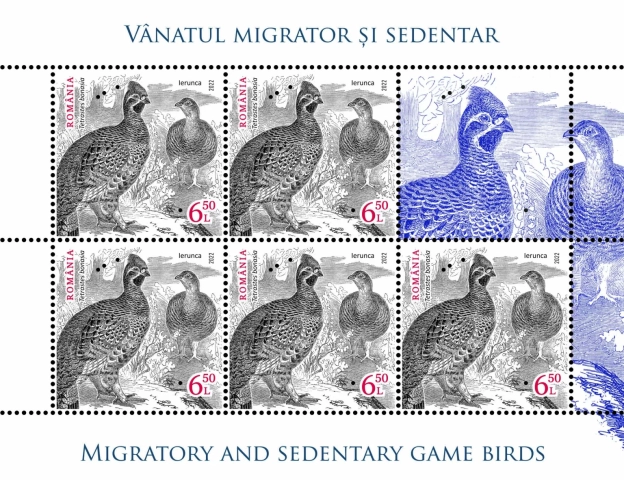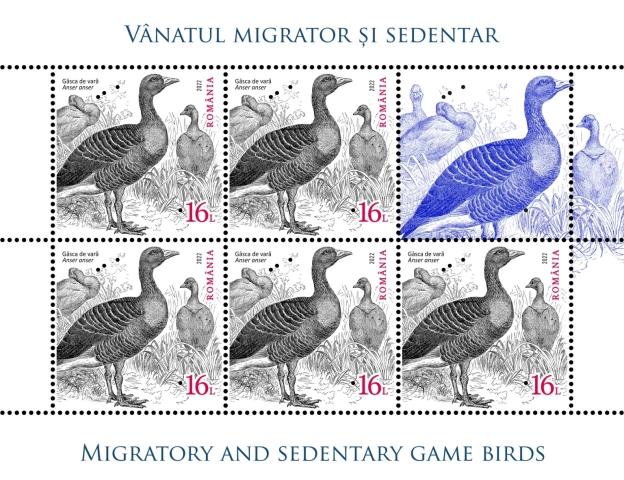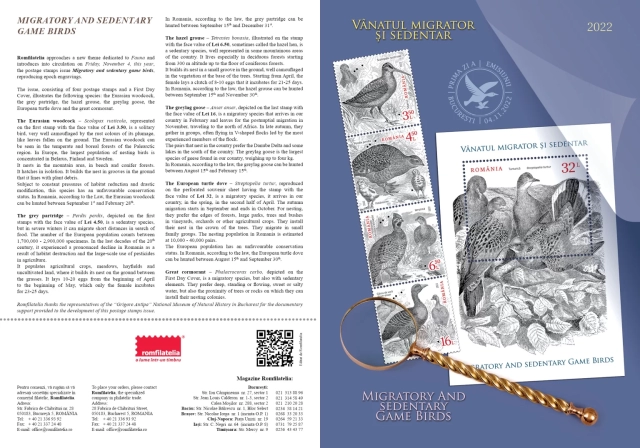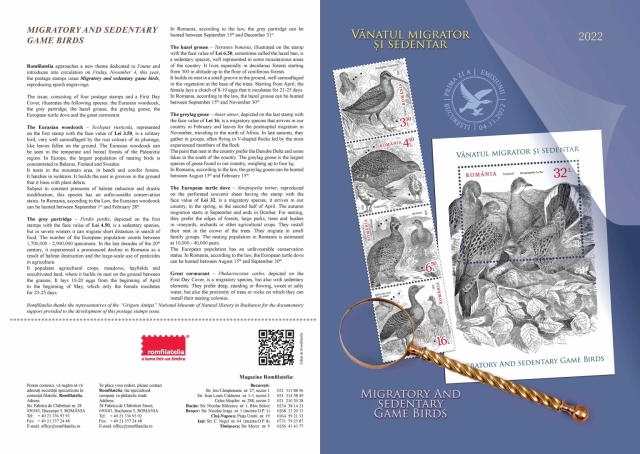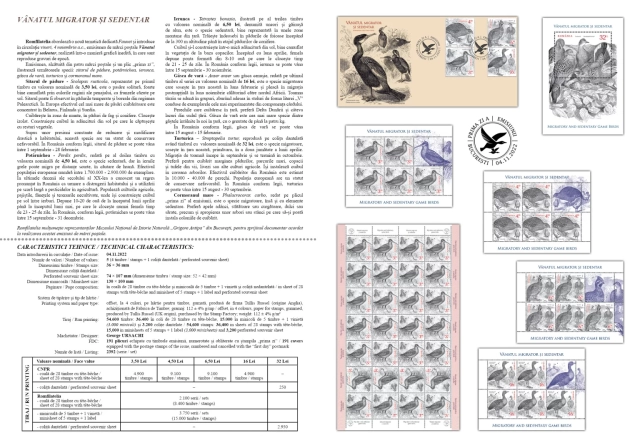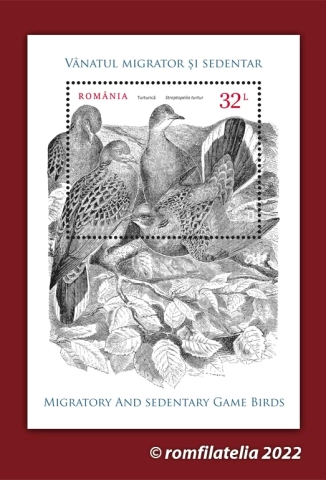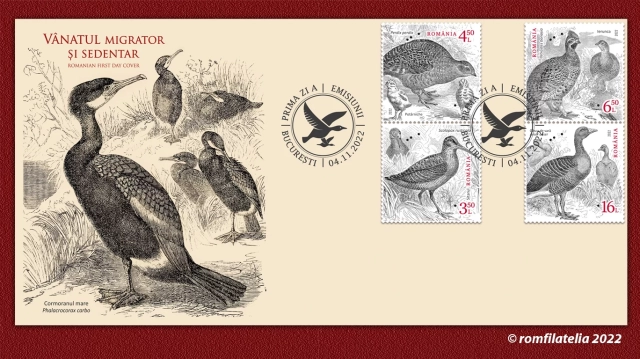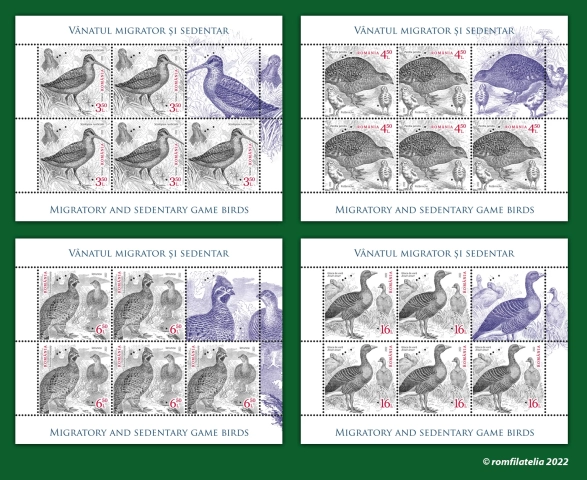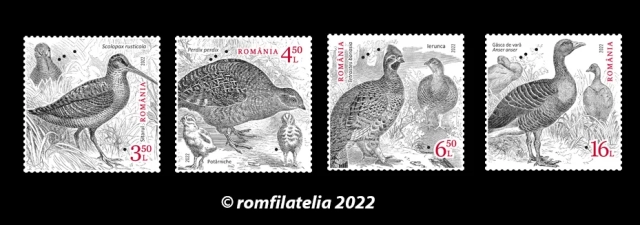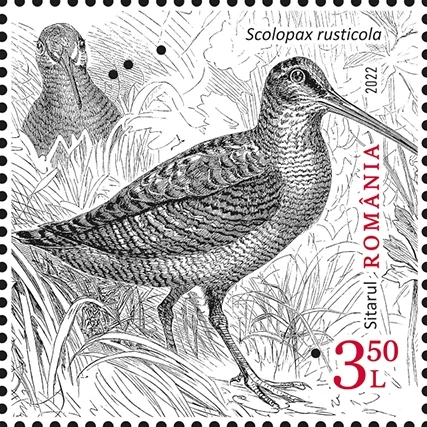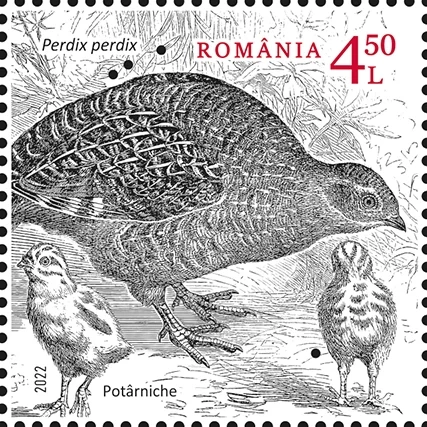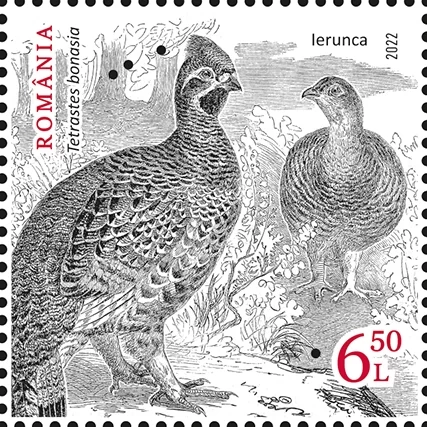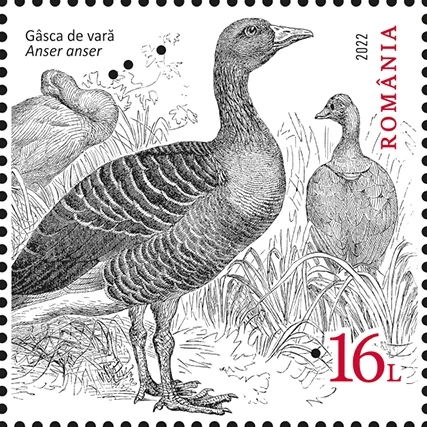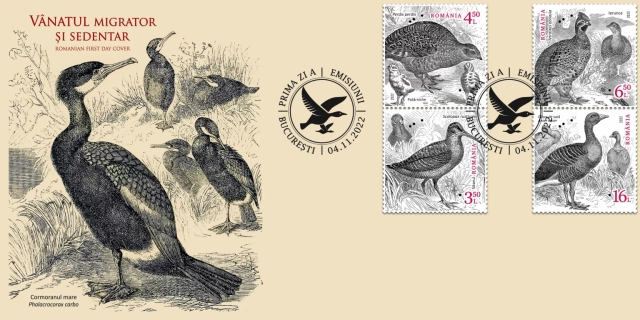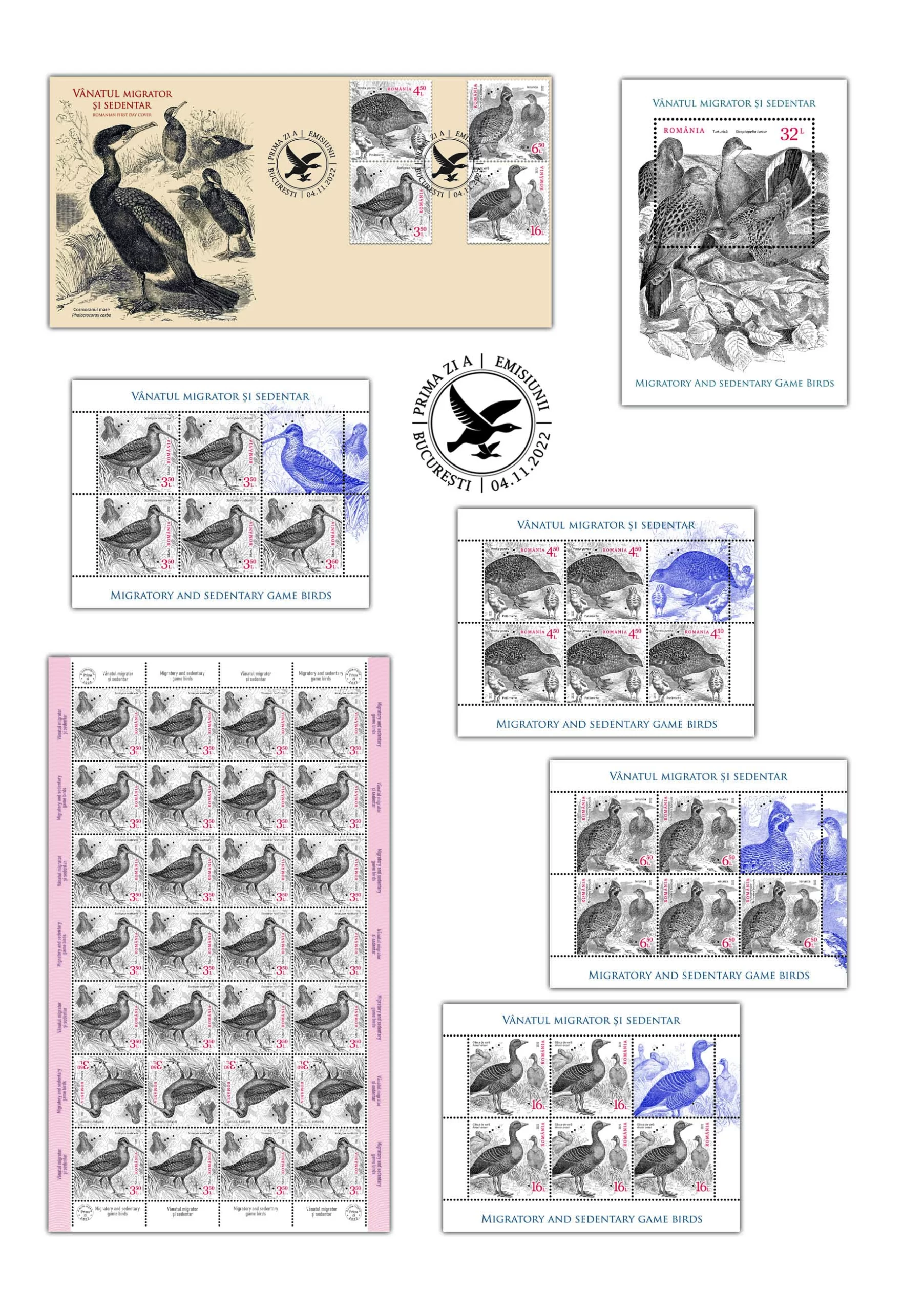 Romfilatelia approaches a new theme dedicated to Fauna and introduces into circulation on Friday, November 4, this year, the postage stamps issue Migratory and sedentary game birds, reproducing epoch engravings.
Romfilatelia approaches a new theme dedicated to Fauna and introduces into circulation on Friday, November 4, this year, the postage stamps issue Migratory and sedentary game birds, reproducing epoch engravings.
The issue, consisting of four postage stamps and a First Day Cover, illustrates the following species: the Eurasian woodcock, the grey partridge, the hazel grouse, the greylag goose, the European turtle dove and the great cormorant.
The Eurasian woodcock – Scolopax rusticola, represented on the first stamp with the face value of Lei 3.50, is a solitary bird, very well camouflaged by the rust colours of its plumage, like leaves fallen on the ground. The Eurasian woodcock can be seen in the temperate and boreal forests of the Palearctic region.
The grey partridge – Perdix perdix, depicted on the first stamps with the face value of Lei 4.50, is a sedentary species, but in severe winters it can migrate short distances in search of food. The number of the European population counts between 1,700,000 – 2,900,000 specimens.
The hazel grouse – Tetrastes bonasia, illustrated on the stamp with the face value of Lei 6.50, sometimes called the hazel hen, is a sedentary species, well represented in some mountainous areas of the country. It lives especially in deciduous forests starting from 300 m altitude up to the floor of coniferous forests.
The greylag goose – Anser anser, depicted on the last stamp with the face value of Lei 16, is a migratory species that arrives in our country in February and leaves for the postnuptial migration in November, traveling to the north of Africa. In late autumn, they gather in groups, often flying in V-shaped flocks led by the most experienced members of the flock.
The European turtle dove – Streptopelia turtur, reproduced on the perforated souvenir sheet having the stamp with the face value of Lei 32, is a migratory species, it arrives in our country, in the spring, in the second half of April. The autumn migration starts in September and ends in October. For nesting, they prefer the edges of forests, large parks, trees and bushes in vineyards, orchards or other agricultural crops. They install their nest in the crown of the trees.
Great cormorant – Phalacrocorax carbo, depicted on the First Day Cover, is a migratory species, but also with sedentary elements.
Romfilatelia thanks the representatives of the “Grigore Antipa” National Museum of Natural History in Bucharest for the documentary support provided to the development of this postage stamps issue.
The philatelic issue will be available starting Friday, 04th of November, in Romfilatelia’s shops network in Bucharest, Bacau, Brasov, Cluj-Napoca, Iasi and Timisoara and online on https://romfilatelia.ro/store/.
For further information, please contact the Public Relation Office:
Tel: 021 / 336 93 92
















